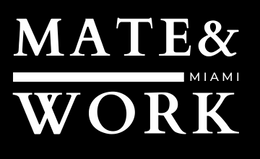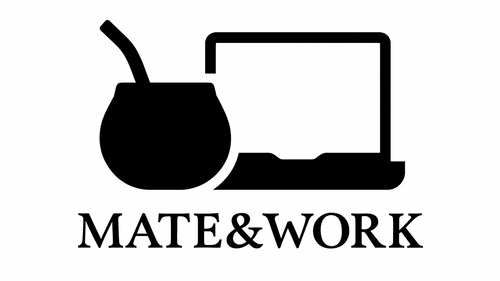8 Virtual assistant services: onboarding that actually moves the needle
What “virtual assistant services” cover today: roles, scope, and common pitfalls
Modern virtual assistant services largely cluster around two operating roles:
-
Executive Assistant (EA): protects leadership time. Manages complex calendars, executive inboxes, board/committee prep, stakeholder coordination, and executive documentation.
-
Administrative/Operations VA (Admin): provides transversal support. Handles shared inboxes and tickets, coordinates vendors, maintains Drive/Docs hygiene, and prepares reports.
Typical scope
-
EA: calendar management with clear rules (buffers, “no-go windows”), executive inbox SLAs, and “T-timelines” for critical meetings (pre-reads, objectives, follow-ups).
-
Admin: SLAs for shared inboxes, document turnaround, Drive audits (naming, permissions, versions), vendor coordination, and SOP updates.
Common mistakes (and how to avoid them)
-
No pre-boarding: the VA starts without access or context. Fix: run a skills inventory and set a first deliverable before Day 1.
-
Blurring EA vs Admin: distinct responsibilities and KPIs. Define non-negotiables vs. nice-to-haves.
-
Vague or missing SOPs: if it isn’t written, it doesn’t exist. Document decision paths and escalation routes.
-
Autonomy without guardrails: creates rework. Progress in stages with explicit metrics.
-
No metrics: no KPIs, no ROI. Track conflicts avoided, hours saved, SLA adherence, and documentation quality.
A useful principle: “The first deliverable kills Day-1 nerves.” A concrete win from the start accelerates confidence and productivity.
0–90 day framework for EA & Admin (pre-boarding → autonomy with guardrails)
Pre-boarding (before Day 1): skills inventory, access, and first deliverable
Before the first Slack hello, complete three actions:
-
Skills inventory with the hire, separating non-negotiables from nice-to-haves.
-
Access and tools ready (calendars, mailboxes, Drive, vendor systems, templates).
-
First “meaningful task” defined (small but with real impact).
According to the LinkedIn figures provided, best-in-class companies are 53% more likely to run pre-boarding and use it to set access, SOPs, and that first assignment. Sharing a 45-day roadmap and assigning a buddy correlates with +69% higher odds of staying ≥3 years, and 87% of organizations report buddy programs speed proficiency.
Quick pre-boarding checklist
-
D1–D7 milestones, calendar rules, and formatting conventions.
-
Minimum SOPs: inbox triage, file naming, notes standard, and handoffs.
-
Buddy with scheduled pairing time and “no-shame” Q&A slots.
Week 1: checklist, skill goals, and radical clarity
Week 1 should compress time-to-productivity. LinkedIn notes 60% of organizations cut ramp time with effective onboarding, and 33% of employees decide in week one whether to stay; front-load clarity:
-
Day 1–2: onboarding checklist + early training conversation.
-
Immediate skill goals: calendar rules, inbox SLA, Drive standards, and the “brief → decision → follow-up” workflow.
-
Measurable task by D1–D5 (real work with end-of-week feedback).
Days 8–30: shadow + simulations to accelerate the curve
Blend shadowing with simulations:
-
Calendar reviews with leadership (surfacing invisible conflicts).
-
Inbox triage sessions using label/priority criteria.
-
Vendor escalation role-plays (“what if…” scenarios).
Onboarding playbooks recommend meaningful early work and weekly improvements. Set a visible weekly improvement (e.g., +10% emails resolved without leadership touch or −6h document turnaround) and close Fridays with retro + SOP adjustments.
Days 31–60: autonomy with guardrails (EA: calendar/inbox; Admin: SLAs & Drive)
EA (explicit guardrails):
-
Takes calendar and inbox ownership on defined days (e.g., Tuesdays and Thursdays).
-
Runs T-timelines for board/steering: documents, pre-reads, due dates.
-
Delivers reports on conflicts avoided and decisions unblocked.
Admin:
-
Manages SLAs for shared inboxes, document turnaround, and Drive audits.
-
Presents weekly accuracy metrics (errors per 100 actions, rework, cycle times).
Typical outcomes observed in ~25-person B2B startups during this phase:
-
Calendar conflicts: −35% around day 45.
-
Leader time saved: 8–12 h/week after day 30.
-
Inbox: backlog 240 → 30 emails; SLA: 48h → 12h.
-
Document accuracy (Admin): >98% in audits.
Days 61–90: automate, document, and scale (SOPs + upskilling)
-
Automate repeatables: Calendly → task creation, canned replies, labels → templates, and Drive cleanup routines.
-
Living SOPs: versioned docs with examples (not static PDFs).
-
Upskilling plan: LinkedIn highlights 46% of leaders prioritize adaptability/reskilling; schedule learning tied to role KPIs.
-
Quarter-ready review: convert early wins into baselines: conflict rate, inbox time saved, SLA adherence, document quality. Decide what remains EA-level vs Admin-level for scalable growth.
Operating playbook: templates, metrics, and dashboards (KPIs that matter)
Core metrics: conflicts avoided, inbox time, SLA adherence
A simple weekly dashboard can track:
-
Conflicts avoided (EA): prevented clashes per week.
-
Inbox time saved (EA/Admin): leadership hours not spent on triage.
-
SLA adherence (Admin): % emails/tickets within threshold.
-
Document accuracy: errors per 100 deliverables.
-
Turnaround: average Doc → Approval time.
Practical rule: visible metrics create stable habits. Quantified progress, reviewed on cadence, builds autonomy without losing control.
Quick automations (Calendly→tasks, labels→templates)
-
Calendly → Task: upon confirming a key meeting, auto-create a task with checklist (brief, pre-read, objectives, due dates).
-
Canned responses: “first touch,” “need more info,” “handoff to finance,” with reusable variables.
-
Labels → Templates: if an email is tagged Vendor/Billing, use a 3-step template (data, status, next action).
-
Drive hygiene: weekly routine naming YYYY-MM-DD – Topic – Status, group-based permissions, orphaned files into /_Archive.
How to choose a virtual assistant services provider (marketplace vs boutique vs full-service)
When a marketplace like Upwork fits
-
Speed and variety: best when mature SOPs and a strong checklist already exist.
-
Cost control: granular budget management.
-
What to require: relevant portfolio, specific reviews, a 1-week trial with measurable goals, time-zone compatibility, and security policy (NDA, group-based access).
When a full-service agency fits
-
Scale + support (HR/IT/Training). Useful to avoid the building process from scratch.
-
Backups: continuity during absences.
-
What to evaluate: use cases similar to yours (EA vs Admin), contractual SLAs, 0–90 onboarding playbook, and weekly reporting.
E-E-A-T signals to demand
-
Experience & authority: detailed case studies, metrics, and comparable clients.
-
Trustworthiness: verified reviews, NDAs, and access controls.
-
Process: pre-boarding, buddy, 0–90 milestones, KPI dashboard, and feedback cadence.
-
Security: least-privilege access, 2FA, and 24-hour offboarding.
Quick FAQ: hiring and security
What does a virtual assistant do (EA vs Admin)?
EA protects leadership time and decisions; Admin optimizes workflows and supports operations. Each requires distinct SOPs and KPIs.
How long to full productivity?
With pre-boarding and a solid checklist, many teams reduce ramp from 4 weeks to ~12 days. Week 1 is critical for retention.
Which access should be ready before Day 1?
Calendars, inboxes (folders/labels and rules), Drive/Docs, Slack, meeting tools, vendor systems, and base templates.
How is ROI calculated?
Leader hours saved + conflicts avoided + SLA compliance − VA/service cost. Log before/after comparables.
Marketplace or agency?
If you have process and SOPs, a marketplace offers speed. For turnkey process, full-service provides structure, training, and coverage.
Conclusion
High-impact virtual assistant services combine pre-boarding, a surgical Week 1, guided practice, autonomy with guardrails, and a finish of automation + SOPs. When every phase has metrics and feedback, the VA stops merely “helping” and starts moving the needle across calendar, inbox, and operational quality KPIs.


